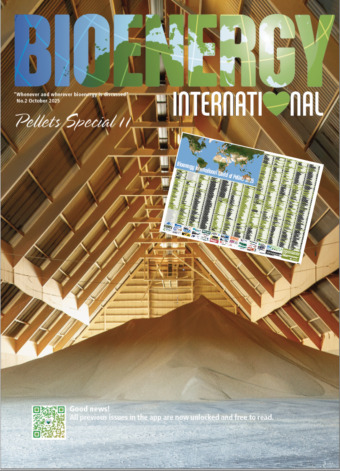In Sweden, multi-municipal energy utility Kraftringen Energi AB (Kraftringen) has held an official groundbreaking ceremony marking the start of construction for a second biomass-fired combined heat and power (CHP) plant at Örtofta outside Eslöv.
In 2022, Kraftringen Energi revealed plans to build a second combined heat and power plant adjacent to its existing CHP plant in Örtofta, and in April 2024, the company was granted the necessary building and environmental permits.
Held on September 12, 2025, the groundbreaking ceremony began with a panel discussion on energy issues related to the region.
Guests included the chairs of the municipal boards of Lund, Eslöv, and Lomma, construction contractors, regional business players, and representatives from the energy industry, as well as academic circles.
We have now broken ground for Kraftringen’s largest investment ever and for the future energy supply. I am very pleased that so many leading representatives from the region’s business, politics, and academia were here and shared this important day with us, commented Christoffer Akej, Chairman of the Board of Kraftringen.
Kraftringen’s estimated SEK 2.4 billion (≈ EUR 220 million) investment in a new biomass-fired combined heat and power plant is the largest in energy production in the Skåne region over the past decade, and it strengthens energy supply in an important part of Skåne.
Power and district heating play a key role in our energy system, and we are convinced that this investment is the right way forward to meet Skåne’s growing energy needs. Now we have finally hosted the groundbreaking ceremony, and we look forward to following the construction until we put it into operation, said Sezgin Kadir, CEO and President of Kraftringen.
Reduced impact with better energy security and readiness
Being built next to the existing CHP unit in Örtofta, the 75 MWth and 25 MWe plant will be put into operation in 2028.
Once operational, it will strengthen the region’s energy security and the capacity of Kraftringen’s district heating system by replacing older production facilities in other parts of the district heating system.
District heating is important for Lomma Municipality’s energy supply. In recent years, we have seen major investments that strengthen the municipality’s infrastructure through, among other things, connections to Hjärup, and soon also Bjärred, where an older production plant will be replaced when the new combined heat and power plant is in operation, said Robert Wenglén, Chairman of the Municipal Board of Lomma Municipality.
With new modern technology, energy production will be more efficient, further reducing the impact Kraftringen’s district heating has on the environment and climate.
A strengthening of energy readiness in the region will also be ensured in the long term through black start and island mode operation capabilities.
Kraftringen’s continued investments in local production and distribution, with smart energy solutions, are all-important cogs in Lund’s work to achieve climate neutrality by 2030. A stable and resource-efficient energy system is a key to increased competitiveness and continued growth in the region, said Anders Almgren, Chairman of the Municipal Board of Lund Municipality.
Woody biomass residues as fuel

The fuel mix is the same as for the original Örtofta plant, i.e., residual products from sawmills in the form of bark and shavings, chipped logging residues, and recycled wood.
The fuel mix will vary based on the market situation.
Historically, at Örtofta, the distribution is approximately 50 percent recycled wood, 25 percent logging residues, 10 percent shavings, and 10 percent bark.
In Eslöv Municipality, we are proud to be net exporters of renewable electricity to our neighboring municipalities. Together with the positive synergies between Kraftringen and Nordic Sugar’s sugar mill, this is a very important investment for the climate, both locally and nationally, said Johan Andersson, Chairman of the Municipal Board of Eslöv Municipality.



